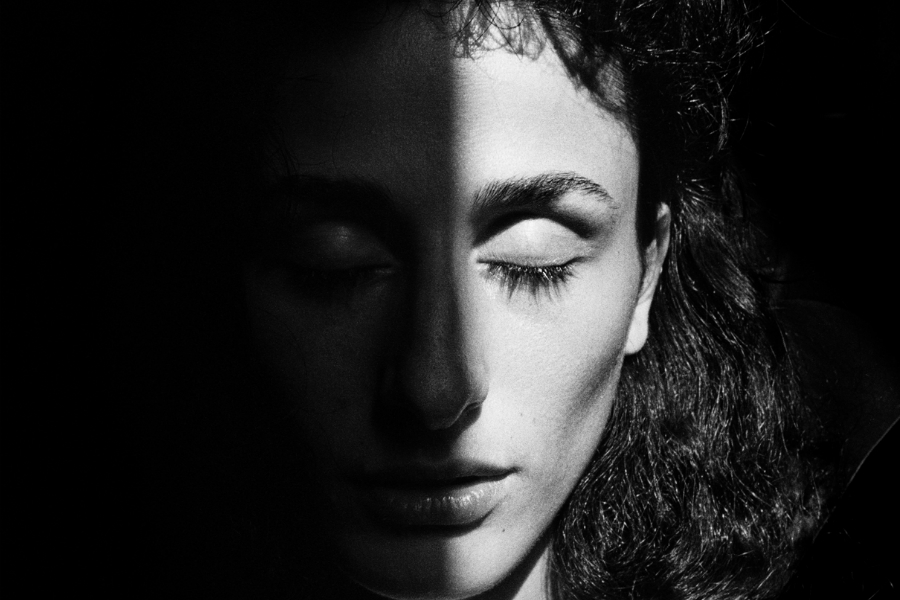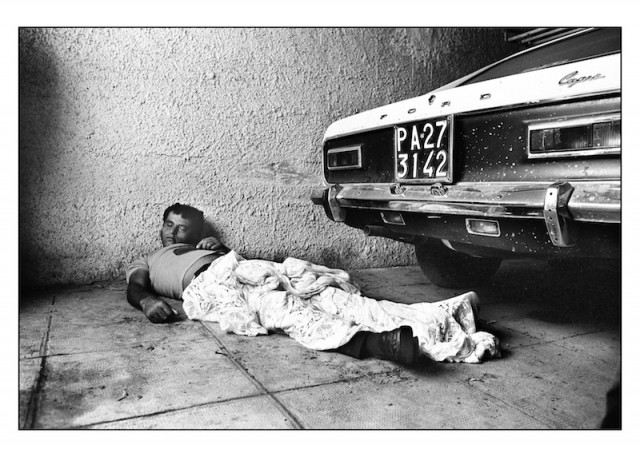Letizia Battaglia: Breaking the Code of Silence

Pete Goodbody explores photojournalist Battaglia’s world of blood, terror, and the resilience of ordinary Sicilians…
It is a strange feeling to walk around this exhibition of photographs taken in Sicily during the ’70s and ’80s, and to recognise we are actually looking at images of a European country that was a founder member of the EU in 1953. Here are images of murder and assassination, set against the more mundane shots of people just doing their everyday thing. It might be Libya or Iraq or Afghanistan. But it’s not. It’s Italy.
Open Eye has given over the whole of its gallery space to Sicilian-born photographer Letizia Battaglia; a UK first, this is a tiny fraction of her 600,000 shot archive. She is responsible for creating a remarkable document of one of the darkest periods of Italian post-war history, when the Mafia ruled their world.
It is a hard-hitting selection of photographs. There is blood, death and more blood and more death. Even in black and white, the blood runs red. One of the most shocking photographs is the one of a politician or a mayor or some other dignitary – I can’t remember which – it doesn’t matter – it didn’t matter to them – who was shot in his car in front of his wife. That was how it worked. Nobody much cared. A brutal image, with his head simply tilted to one side and blood trickling down his cheek.
There is no doubt that he was assassinated; his crime was probably to have walked on the wrong side of an invisible line.

This was Battaglia’s world. After all, her name means ‘War’. But there was also a gentler and more sensitive side. Whilst the criminal elements of Sicily were busy killing each other, the rest of the population had to get on with life. These everyday shots are some of Battaglia’s best.
The glorious scene of a hen and a couple of bottles of wine on a table to make a picnic in the sun (although, presumably, the hen didn’t see lunch) and the, quite frankly, gorgeous girl in a photo taken in 1981 in Palermo doing the washing up. I wonder where she is now; she looks about 18 in the photo. I was 18 at the same time. She had never been to school.
Battaglia spent much of her time during this period shooting for L’Ora, Palermo’s left-wing daily newspaper. She saw pretty much every major crime scene in the city during those years, which were inevitably Mafia related, but also an assault on ordinary society. These were not just internal wars of gangsters shooting each other; they affected the lives of the people who saw them. The photos demonstrate that.
Battaglia, ultimately, suffered for her work. She lived in the old centre of Palermo, a grim place to be and was often burgled as a result. Death threats due to the nature of her work were a feature of her life, yet she carried on. She wasn’t the only one. There are plenty of photographs in this exhibition of magistrates and prosecutors slain by Mafia bullets who fought the same war. But it is due to her work, and the crucial role played by her pictures, that has helped to give Sicilians a voice in opposing the Mafia system.
Gradually, over time, the influence of the Mafia would appear to have diminished and a new attitude has emerged in Sicily. This is in no small part down to Battaglia, whose photographs exposed the carnage. But she should also be recognised as a great documentary photographer who simply shot what was in front of her.
Pete Goodbody
Letizia Battaglia: Breaking the Code of Silence is showing at Open Eye Gallery until 4 May 2014 (free entry, Tuesday-Sunday, 10.30am-5.30pm)
Images: main: Palermo, 1992. Rosaria Schifani, the widow of police agent Vito killed together with judge Giovanni Falcone, Francesca Morvillo and his colleagues Di Cillo and Antonio Montinaro © Letizia Battaglia
Centre: Palermo, 1988. Assassination with Palermo plate © Letizia Battaglia





